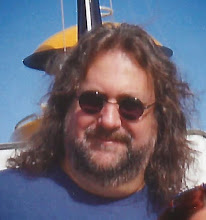I think I have now lightened my load by at least nine computers and maybe as many as eleven, I have lost track you see. But I do know that I took three to the Goodwill Reclamation Center this afternoon (along with a scanner). Among the discards today were two computers I actually bought as full-blown systems, which is rare for me. One was a Dell Dimension 120 (yep, 120MHz) that I paid $4,500 for in 1995 when it was new. This system also had on it something that at one time was a sign of pure status on my part, something that you would not be able to get $20 for today but which cost me $1,000 in 1995. It was a Pinnacle Micro RCD-202 CD-ROM Writer and I was the only person I knew for years who had one.
 Now $1,000 might seem like a lot of money for a CD burner and it was, but the year before, when the RCD-202 had first come out it costs $3,995, so $1,000 was a huge drop in the price. The RCD-202 was a 1X burner, meaning it was slow and could take literally hours to burn a CD; an hours worth of music took an hour to burn. Oh, and the blank CDs were made out of gold and cost between $3-$14 a piece.
Now $1,000 might seem like a lot of money for a CD burner and it was, but the year before, when the RCD-202 had first come out it costs $3,995, so $1,000 was a huge drop in the price. The RCD-202 was a 1X burner, meaning it was slow and could take literally hours to burn a CD; an hours worth of music took an hour to burn. Oh, and the blank CDs were made out of gold and cost between $3-$14 a piece.Why did I buy it? Well, I had been "into" CDs for a long time and was shocked that I could burn one in my home. In 1986 when I worked at EDS I was in charge of a group of programmers who were developing a bevy of PC-based CD products under the umbrella name of Opti/Search. Making CDs in 1986 was expensive. It took a $200,000 dedicated hardware/software system to get enough memory to create a CD and its index. You downloaded to the dedicated system through tapes the information you wanted on the CD and then the system processed the data and spit out a final tape of the CD image. You then got in line at one of the three labs on the planet that could master a CD with your tape and $10,000. In one to three months they sent you a master CD.
By the time I left EDS on December 31, 1989 you could get a master made overnight for $1,000. Five years later for $1,000 I could make my own CDs on my own PC without any dedicated hardware or software. I bought the damn thing because it was a breakthrough.



No comments:
Post a Comment